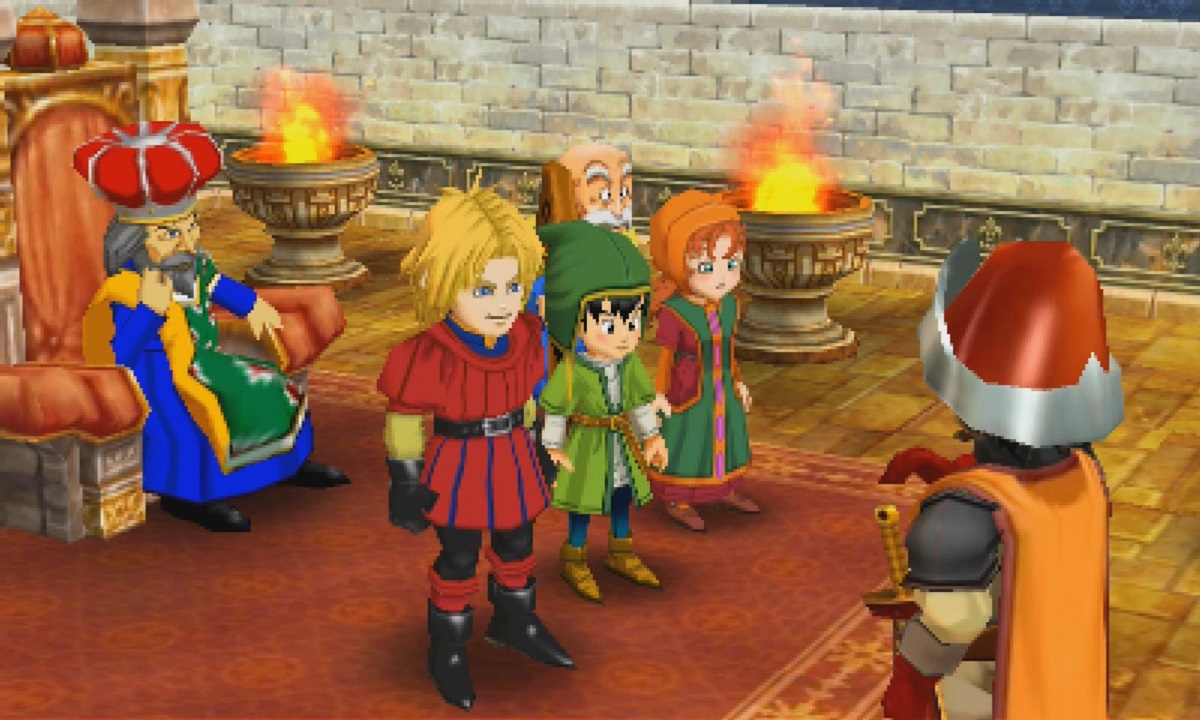Dragon Quest VII: Fragments of the Forgotten Past Unveiled as Full 3D Remake, Eschewing HD-2D

A monumental announcement has stirred the gaming world, as Square Enix officially revealed a full remake of the beloved classic, Dragon Quest VII: Fragments of the Forgotten Past. This highly anticipated title made its grand debut during a recent Nintendo Direct presentation, instantly captivating fans eager to revisit the expansive, time-traveling adventure. Breaking from a recent trend, this new iteration will not utilize the popular HD-2D graphical style, instead opting for a complete overhaul that promises a fresh, modern visual experience while preserving the original's intricate narrative and charming essence. This decision marks a significant development for the enduring Dragon Quest saga, hinting at a truly reimagined journey for both veterans and newcomers alike.
A Journey Through Time Reimagined
Originally released in Japan in 2000 for the PlayStation, Dragon Quest VII: Fragments of the Forgotten Past, known as Dragon Warrior VII in its initial North American release, is celebrated for its ambitious scope, intricate narrative, and challenging gameplay. The game tasks players with restoring forgotten islands to the world by traveling through time, piecing together history, and confronting ancient evils. Its story is renowned for its depth, often exploring poignant themes of memory, loss, and the impact of the past on the present. A previous remake for the Nintendo 3DS brought the game to a new generation with updated 3D graphics, streamlined mechanics, and quality-of-life improvements. However, this newly announced project goes far beyond a simple port or graphical update, promising a comprehensive reconstruction from the ground up.
Beyond the HD-2D Trend: A New Visual Direction
One of the most significant takeaways from the announcement is the confirmation that this remake will not adopt the HD-2D graphical style. Square Enix has garnered considerable acclaim for its use of the HD-2D engine in titles such as Octopath Traveler, Triangle Strategy, and the recent remake of Live A Live, as well as the upcoming Dragon Quest III HD-2D Remake. This distinctive style blends classic 2D pixel art characters and sprites with modern 3D environments, enhanced lighting, and visual effects, creating a unique nostalgic yet contemporary aesthetic. The decision to forgo HD-2D for Dragon Quest VII suggests a different artistic vision for this particular title, leaning towards a fully modernized 3D presentation that aims to fully immerse players in its vast world.
This departure from the popular HD-2D style implies a commitment to a contemporary visual fidelity that could redefine how players perceive the classic world of Dragon Quest VII. Fans can anticipate fully rendered environments, character models, and animations that leverage current generation hardware capabilities. This approach could allow for more dynamic camera angles, detailed environmental storytelling, and a heightened sense of scale, particularly important for a game known for its sprawling world and numerous distinct landmasses. The previous 3DS remake, while a significant upgrade from the PlayStation original, still operated within the handheld's technical constraints. A full remake on more powerful platforms opens up possibilities for breathtaking vistas and intricate dungeon designs previously unimaginable.
What "Full Remake" Truly Means
The term "full remake" often implies a complete overhaul, not just in visuals but potentially in gameplay mechanics, user interface, and even quality-of-life features. While the core narrative and characters are expected to remain faithfully intact, players might anticipate modern conveniences that streamline the experience without sacrificing its original charm or challenge. This could include updated menu systems, faster travel options, rebalanced combat encounters, or even new orchestral arrangements of Koichi Sugiyama’s iconic score. Such enhancements would be crucial in ensuring that a game originally designed for a different era feels fresh and accessible to both long-time fans and those discovering the adventure for the first time.
Considering the scope of Dragon Quest VII, which is famously one of the longest entries in the series, a thoughtful approach to modernization will be key. The original game often required significant time investment, and while its depth is a cherished aspect, certain elements could benefit from subtle refinements. A full remake offers the perfect opportunity to strike a balance between preserving the authentic Dragon Quest experience and introducing improvements that align with contemporary gaming expectations. This includes potentially revisiting the game's class system, monster recruitment mechanics, and the overall pacing of its extensive story arcs.
Anticipation and the Future of Dragon Quest
The announcement of a Dragon Quest VII remake, following closely on the heels of the Dragon Quest III HD-2D Remake and the highly anticipated Dragon Quest XII: The Flames of Fate, underscores Square Enix's renewed commitment to the venerable JRPG franchise. This strategic move ensures that both classic entries and future installments receive significant attention, catering to a diverse audience. The decision to invest in a full 3D remake for Dragon Quest VII, distinct from the HD-2D approach, indicates a varied strategy for revitalizing its back catalog, choosing the most appropriate visual style for each title’s unique identity.
Fans worldwide are now eagerly awaiting further details, including potential release windows, target platforms, and a deeper look into the new visual direction. The prospect of experiencing the epic tale of Kiefer, Maribel, and the Hero in a brand-new, fully realized 3D world is a thrilling one. It represents not just a nostalgic trip, but an opportunity for a masterpiece of the JRPG genre to shine brightly for a new generation, solidifying its place as a timeless adventure in the annals of gaming history.
